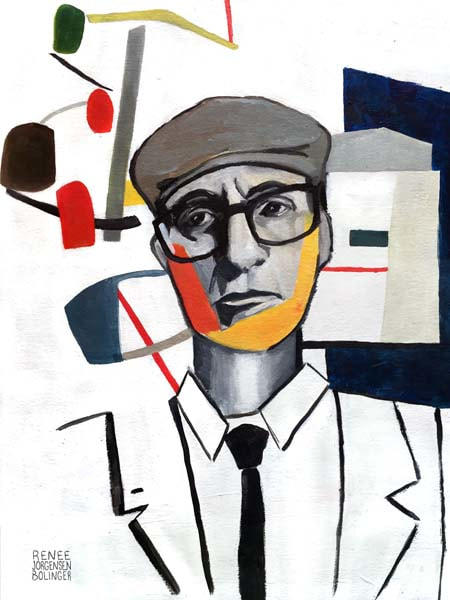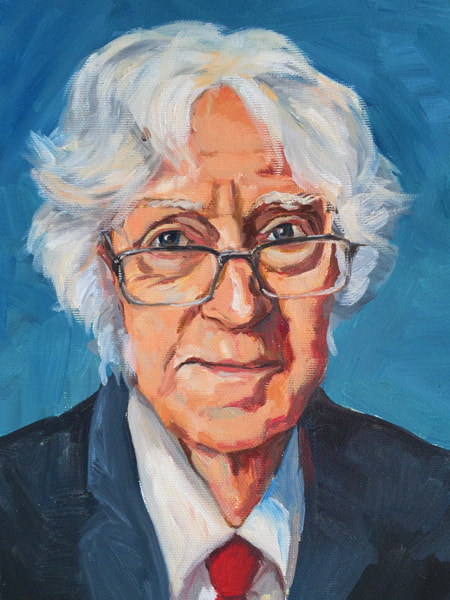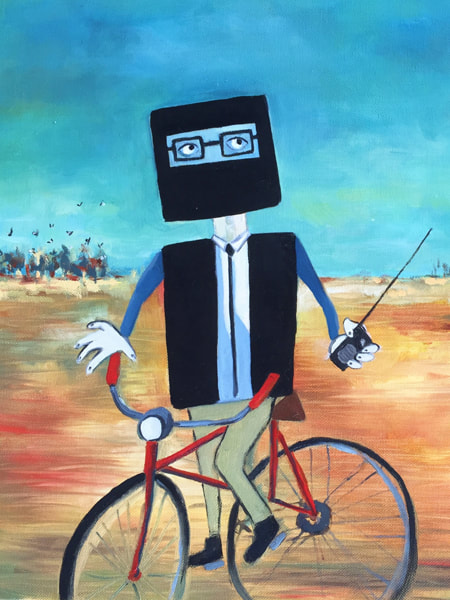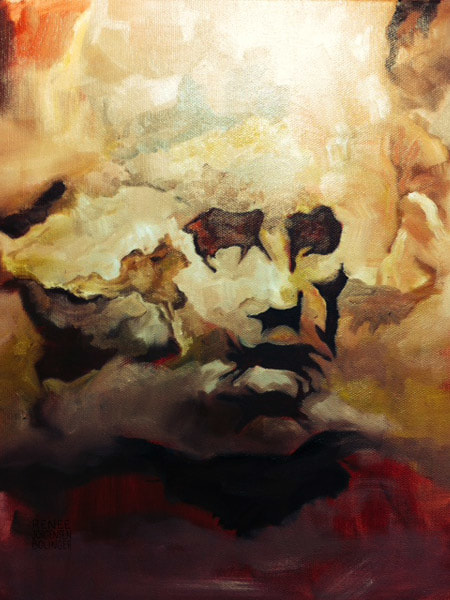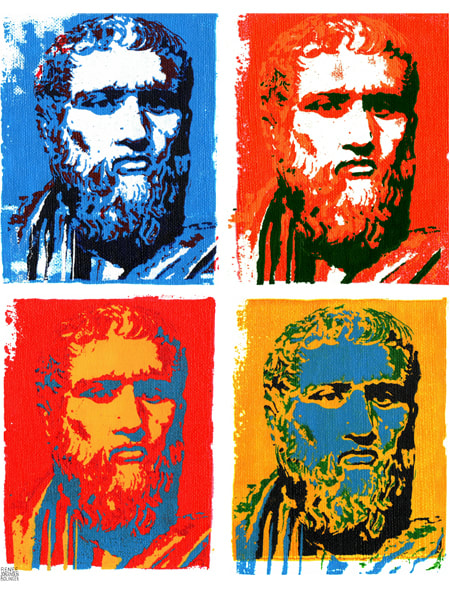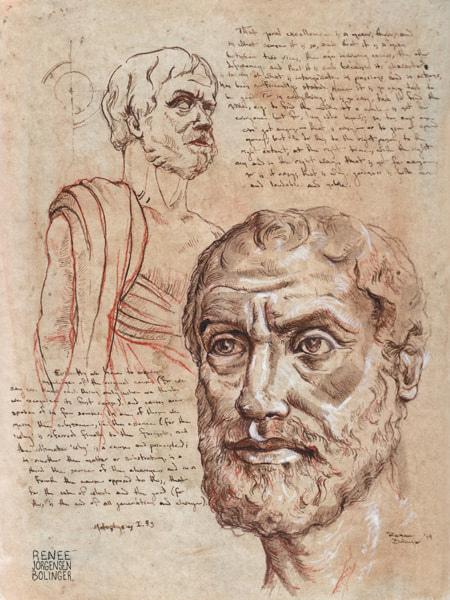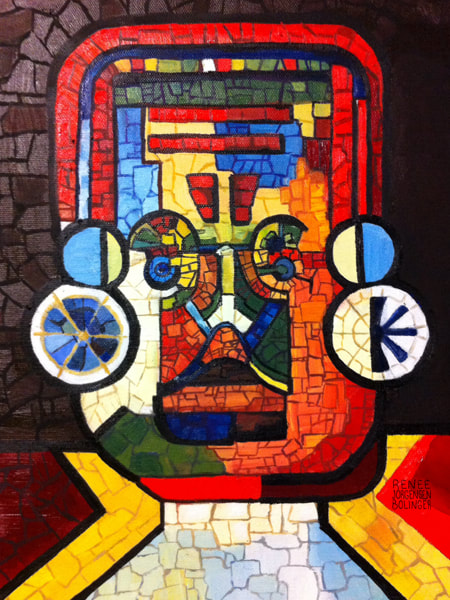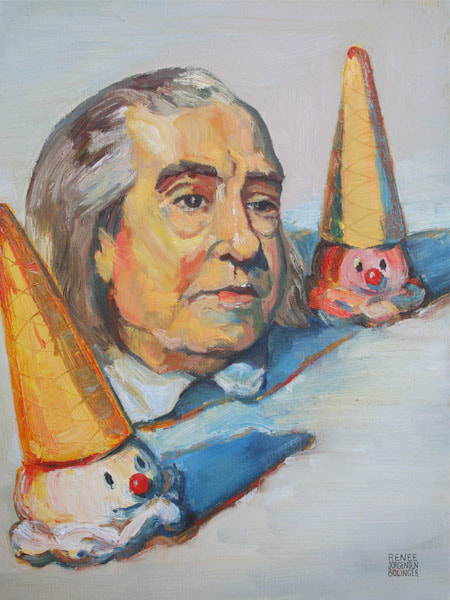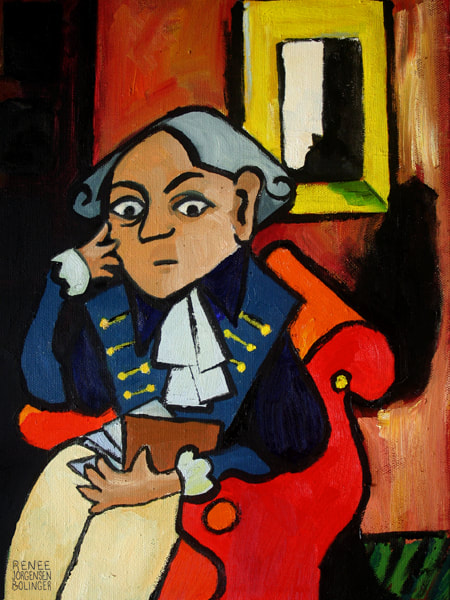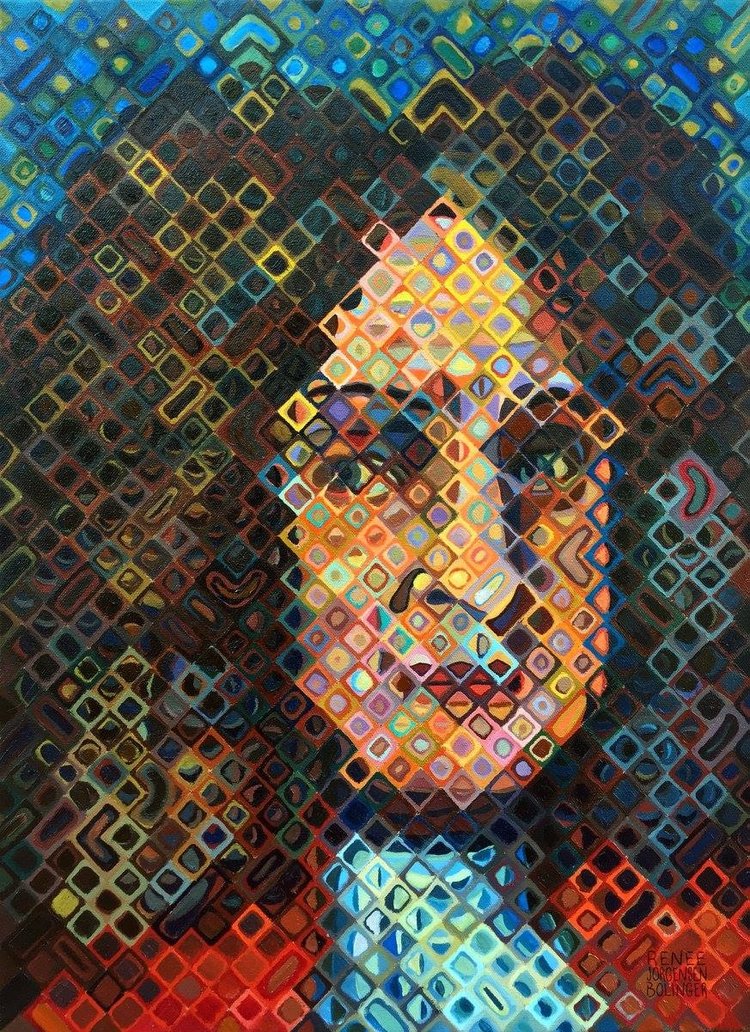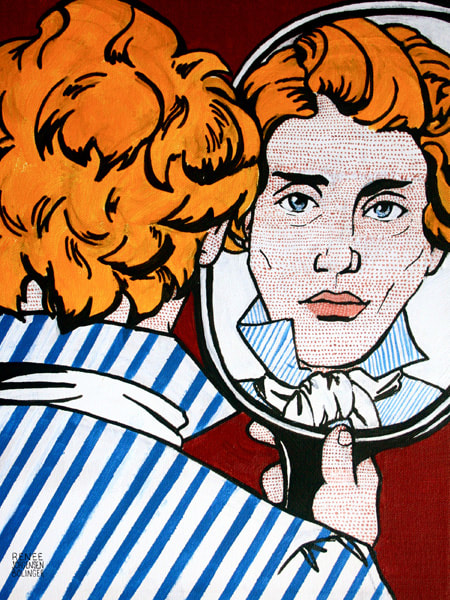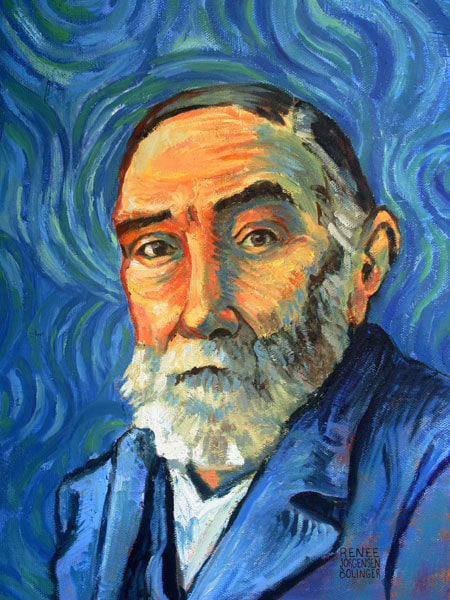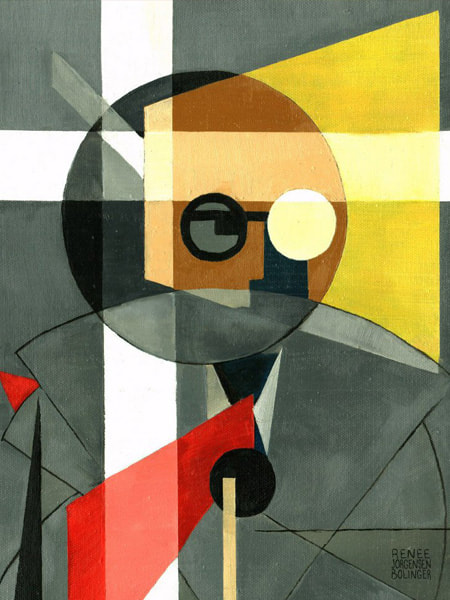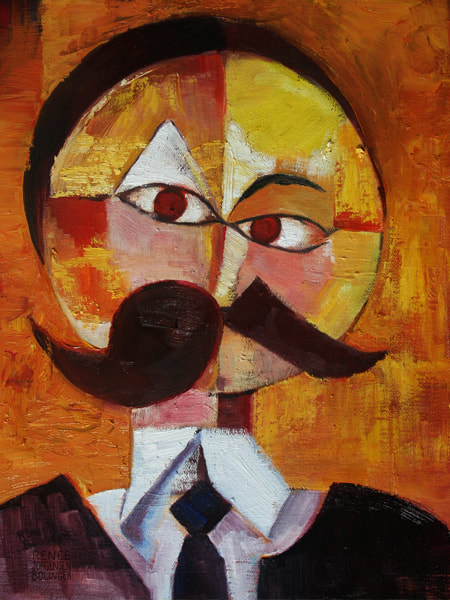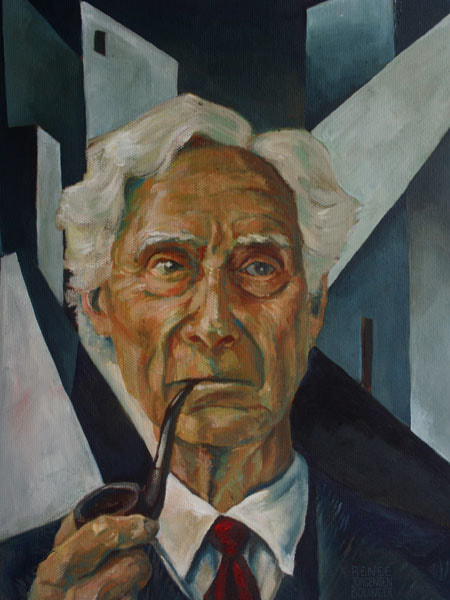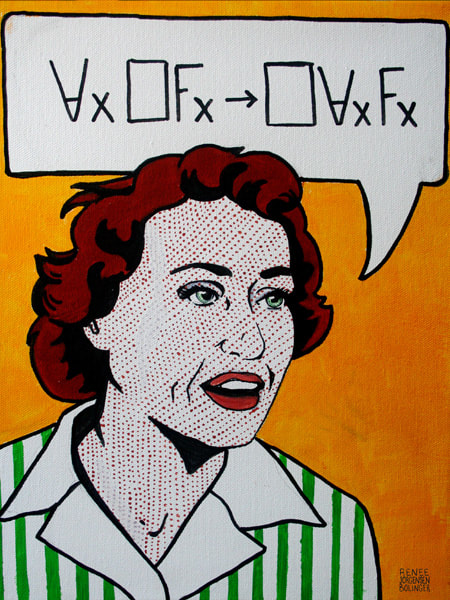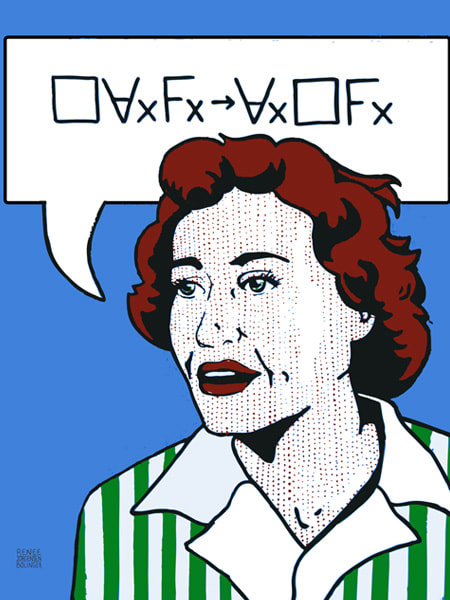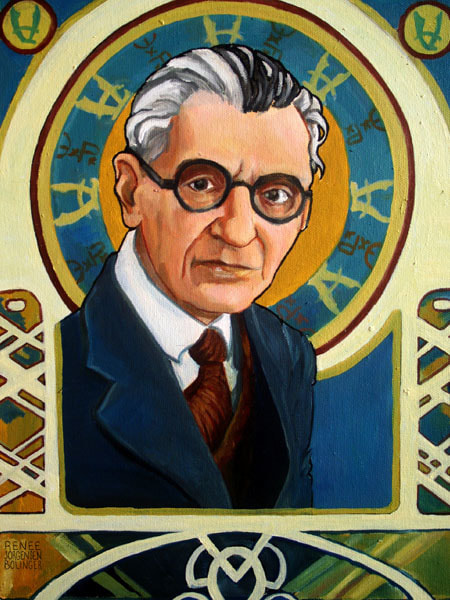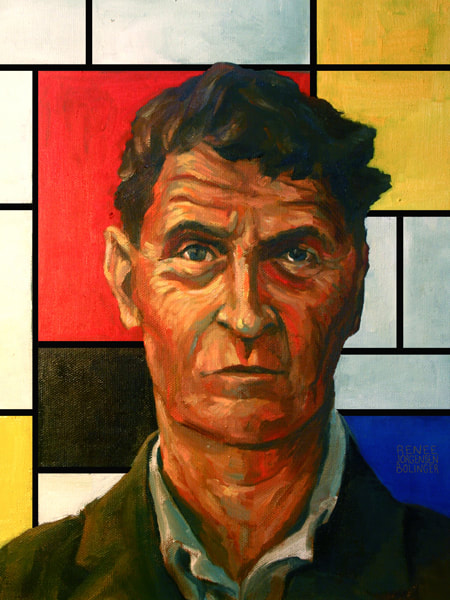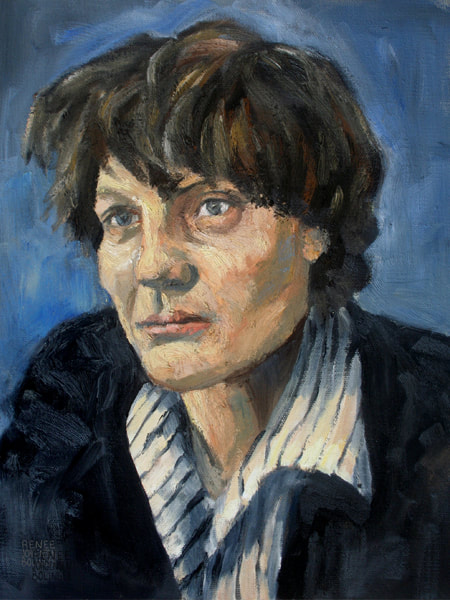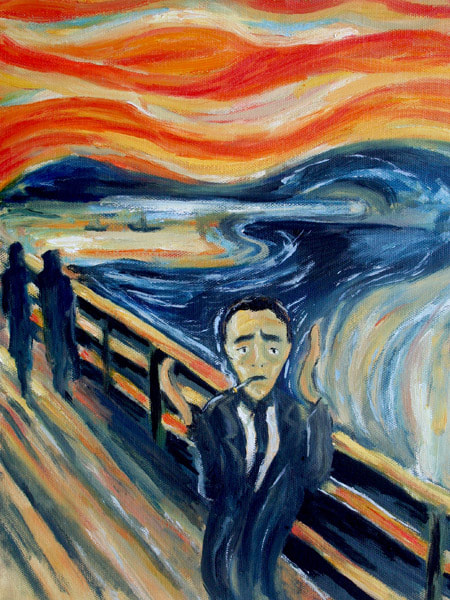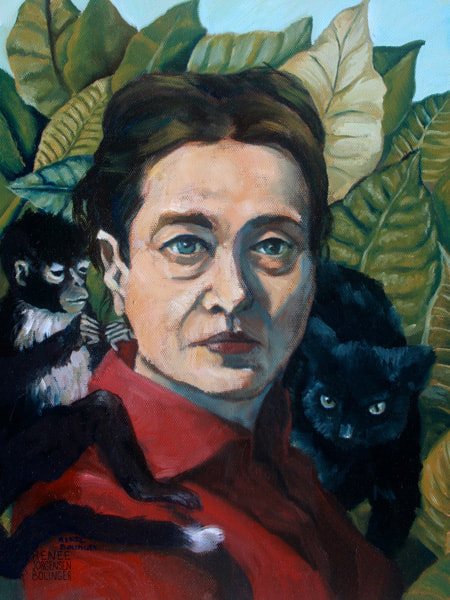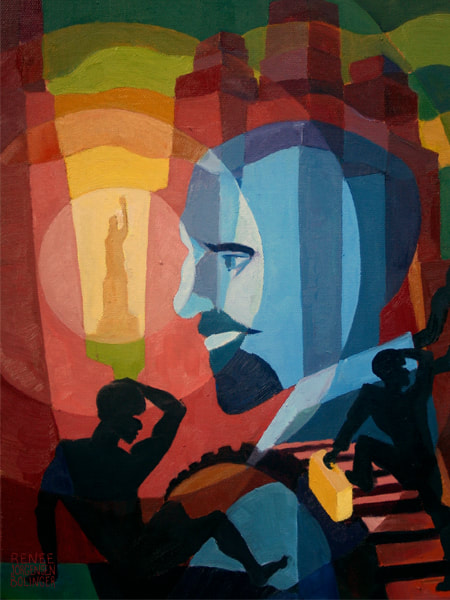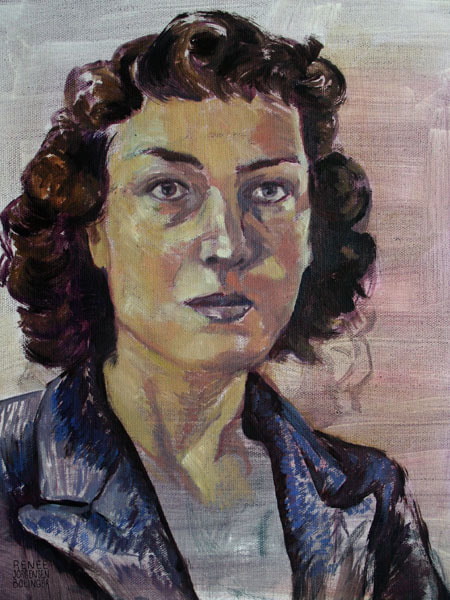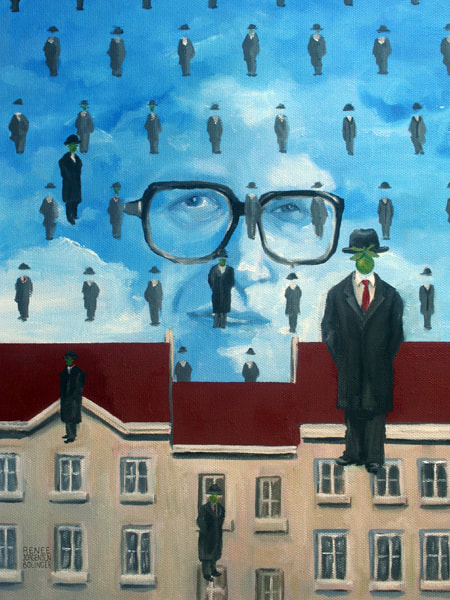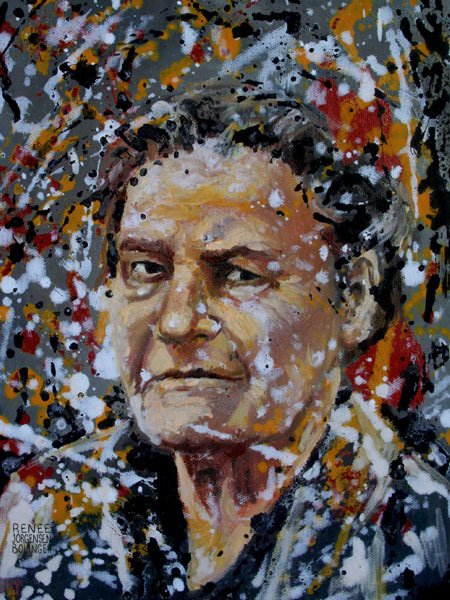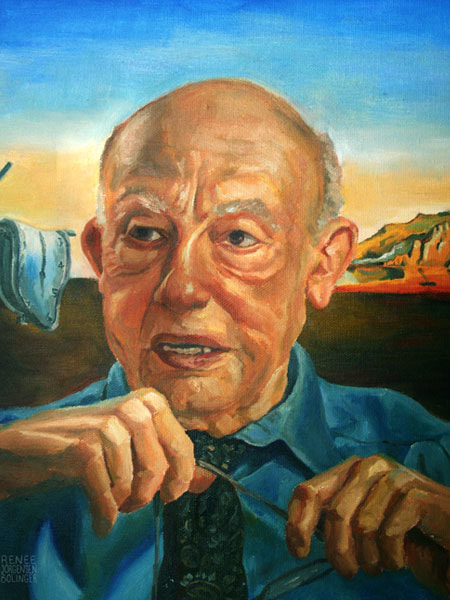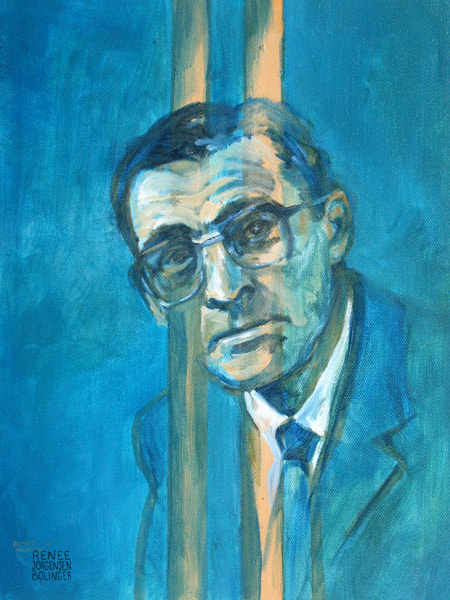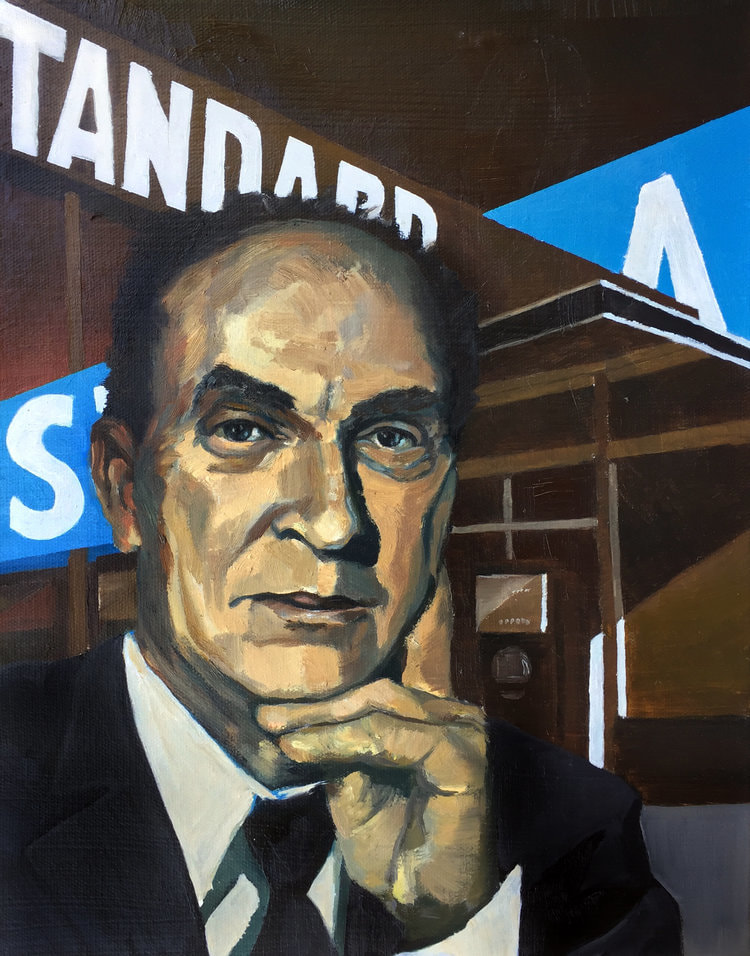Philosophy Portraits
Everyone has a hobby; this is mine.
This is an ongoing painting series, aiming to create portraits of a variety of philosophers in (something like) the style of a like-minded artist. Most of the paintings in the series are 11"x14", oil on canvas. I'm always open to suggestions for philosophers and/or artists to tackle next ([email protected]), though the series is limited to philosophers who are no longer living.
For Your Office
If you like the pieces and want to decorate your office (or department walls) with them, there are prints, mugs, shirts, tote bags, and various other forms of each piece available at my society6 storefront. Large-scale posters of some of the pieces are available on redbubble here.
Using The Images
If you'd like to use one of these images (for a conference poster, book cover, website, etc.,) please ask me. I am often happy to help, and will try to ensure that you have the appropriate file type for your needs. I do ask that the images be properly attributed.
This is an ongoing painting series, aiming to create portraits of a variety of philosophers in (something like) the style of a like-minded artist. Most of the paintings in the series are 11"x14", oil on canvas. I'm always open to suggestions for philosophers and/or artists to tackle next ([email protected]), though the series is limited to philosophers who are no longer living.
For Your Office
If you like the pieces and want to decorate your office (or department walls) with them, there are prints, mugs, shirts, tote bags, and various other forms of each piece available at my society6 storefront. Large-scale posters of some of the pieces are available on redbubble here.
Using The Images
If you'd like to use one of these images (for a conference poster, book cover, website, etc.,) please ask me. I am often happy to help, and will try to ensure that you have the appropriate file type for your needs. I do ask that the images be properly attributed.
|
Reflective Equilibrium
Portrait of John Rawls. Borrowing stylistic elements from Jean Helion’s ‘Equilibrium’ series, to allude to Rawls' methodological commitment to reflective equilibrium. |
Still life with Tie and Glasses.
Derek Parfit. Paired with contemporary British painter David Hockney's series `82 Portraits and 1 Still Life' , to reflect Parfit's methodical and thorough, if somewhat depersonalizing, investigation of personal identity. |
Rule Breaker
Jack Smart. Paired with Sydney Nolan's series on Ned Kelly, an Australian outlaw who, like Smart, rebelled against the notion that an act is permissible just when it is in accord with a generally justified rule. |
|
Cave Drawings
Plato, paired with the Lascaux cave drawings, to reflect Plato's famous allegory. |
Reflected Forms
Plato. Paired with Andy Warhol's screenprint style, since his fascination with the degradation of the image through screenprinting echoes Plato's analysis of the forms as imperfectly reflected in the material world. |
On the Nature of Things
Aristotle. Paired with DaVinci's sketchbook style, for their similarly exacting studies of nature. |
|
Contingent Co-occurrence
David Hume. Paired with Scottish mosaic artist Eduardo Paolozzi, whose style reflects Hume's dictum that there are no necessary connections between distinct essences. |
Frozen Delights
Jeremy Bentham. Paired with Wayne Thiebaud, largely for Bentham's emphasis on hedonist utilitarianism, but partly also for his famous desires concerning the preservation of his body upon death. |
Philosopher with a Book
Immanuel Kant. Paired with Pablo Picasso, since both focused a great deal of their work on the obstacles to direct perception of the external world. |
|
Monads
Gottfried Wilhelm Leibniz, who developed a metaphysics according to which the world is made up of atom-like 'monads', paired with contemporary pointilist Chuck Close. |
"A relation which relates itself to its own self..."
Soren Kierkegaard, in the style of Roy Lichtenstein. This image pairing reflects the opening line of Kierkegaard's Sickness Unto Death, in which he defines 'the self' as a relation which relates itself to its own self. |
Evening Star
Gottlob Frege. Paired with Van Gogh's Starry Night, as a pun on Frege's famous puzzle about the significance of learning that "Hesperus is Phosphorus." |
|
Frameworks
Rudolf Carnap. Paired with László Moholy-Nagy, whose work Carnap considered most in line with the spirit of his own. |
Ecce Homo
Friedrich Nietzsche. Paired with Paul Klee, for their similar emphasis on delight in primitive forms. |
Propositional Structures
Bertrand Russell. Rendered in an Art-Deco style. |
|
Formulaic, v.1
Ruth Barcan Marcus. In the style of Roy Lichtenstein, an artist whose work is similarly focused on the analysis of a particular formula. Translated from symbolic modal logic, this reads "If everything is necessarily F, then necessarily, everything is F." |
Converse Formula
Ruth Barcan Marcus. In the style of Roy Lichtenstein, an artist whose work is similarly focused on the analysis of a particular formula. The image and formula are the converse of 'Formulaic v.1'. |
Logic and Computability
Kurt Gödel. Rendered in the Art-Nouveau style, for its emphasis on recursion, since they echo Godel's prominent work in recursive proofs in logic. |
|
Logical Space
Ludwig Wittgenstein. Paired with Piet Mondrian, to represent picture of the logic of space laid out in the Tractatus. |
An Honest Look
Iris Murdoch. Paired with Lucian Freud, for similar emphasis on avoiding idealization in love. |
Meh.
Albert Camus, paired with Edvard Munch's The Scream, as a fitting instantiation of Camus' approach to existential angst. |
|
Self-Construction
Simone De Beauvoir. Paired with Frida Kahlo for their shared interest in self-portrayal and the social construction of femininity. |
Struggle of the Towers
WEB Du Bois. Paired with Aaron Douglas, for many reasons: their careers were closely connected, and both focused their work on the double-consciousness of Black Americans in a predominantly white society. |
The Virtues of Study
Philippa Foot. Paired with Toulouse Lautrec, for their parallel interests in the relationship between moral norms and the norms of etiquette. |
|
The Original Position
John Rawls. Paired with Rene Magritte, whose work abstracts from the individualizing features of actual subjects in a way that renders them interchangable, but still economic and seemingly masculine. |
Action Philosophy
GEM Anscombe. Paired with Jackson Pollock, an American action painter; the work of each centers on the nature and consequences of action. |
Let many flowers bloom
David Lewis. Based on Van Gogh's portrait of a Postman, on account of Lewis' tolerance of a plethora of views. |
|
Desert Landscapes
WVO Quine. Paired with Salvador Dali, based on a shared preference for desert landscapes. |
Expressive Discord
C.L. Stevenson, paired with Barnett Newman’s ‘Concord’, for their parallel interest in the logic of expressive forms. |
Standards
P.F. Strawson, paired with Ed Ruscha for their similarly exacting work on the contours of natural language. |
